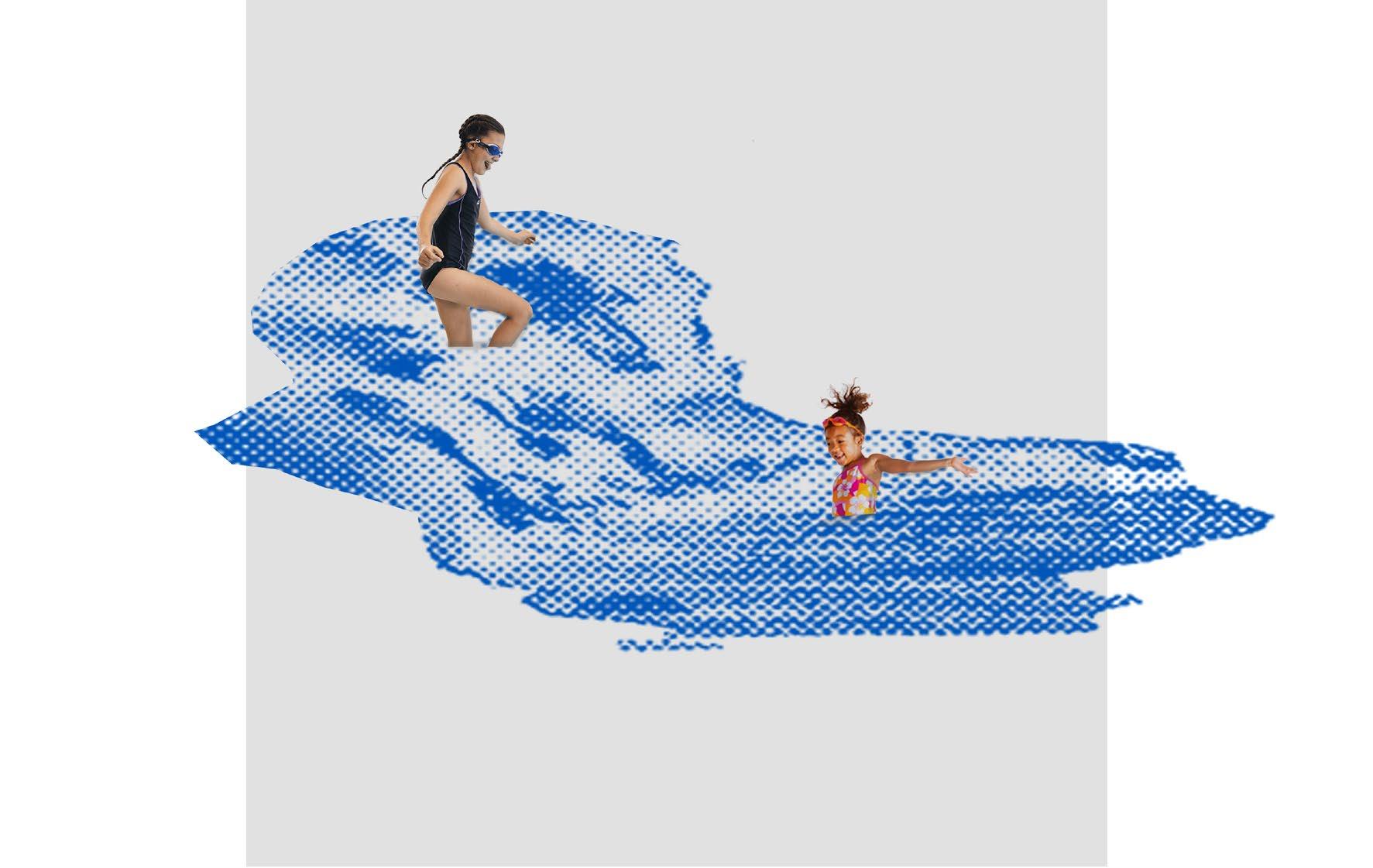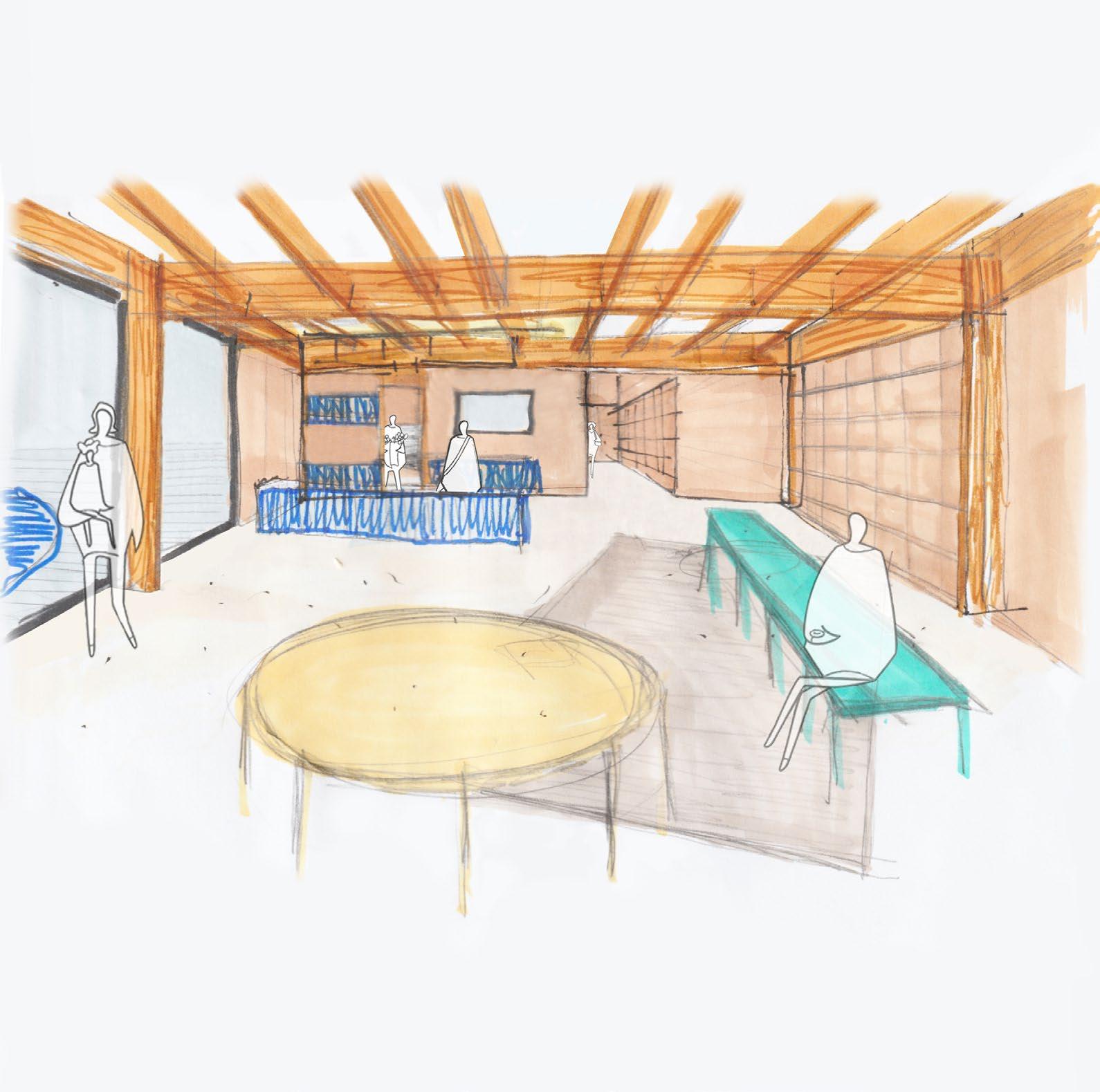
3 minute read
Water Interaction
Fig. 21 - Two boys in a pool, Hollywood (1965) - D. Hockney
To further develop to notion of water interaction, introduced in the theoretical framework and in the realisations of Van Eyck, the following chapter will research on water interaction potentialities.
Advertisement
[History] Since the beginning of times, humans have interacted with water elements. Water being the essential source of life, it always attracted living beings around its springs.
[Art] This attraction and tension around water is extensively represented in culture and arts. The adjacent page illustrate the famous serie of paintings produced by David Hockney in the 60’s. This artist is known to represent pools as his main topics. Other numerous artists, do express with their artistic personalities the interaction between humans and water. The representation signify the importance of this topic.
[An element of Play] In Play behaviours, the transformative aspect introduced by transitional object is of real importance. For that reason, the characteristic of this object were defined to permit most of its transformative properties. An importance toward the non-prospective and imaginative abstraction of the object was called out.
For this reason, water could be envisioned as a play element, as an abstract medium allowing imagination and therefore transformative educational performances.
On the following pages, a more detailed deconstruction of the different ways of interacting with water is dispensed.
VISUAL
The first and most obvious way to interact and enjoy water is visual. The sight of moving water helps calming the soul and create a well-being feeling. Sounds produced by water (like in waterfalls for example) also induce calming properties. The colour, transparency and reflections of the liquid adds even more qualities to the visual characteristics of water.
These properties are used for embellishment since ancient times. Rich romans had decorative fountains and water basins in their patios.

The proximity to natural water also allows interaction with a particular fauna and flora present in it. This provide natural connexion experiences which is beneficial for the interacting user.
REFRESHMENT
The cooling characteristic of water evaporation are known since ancient times. The fact romans had fountains for decoration purposes also created micro-climates in those patios spreading a refreshing breeze in their villas.
In urban settings, lakes and watercourses cool the surrounding environs to a significant and perceivable amount in warmer periods.
The contact of water with skin also creates a refreshing feeling. Indeed, for water to change state from liquid to water vapor, it absorbs the heat of the skin. This process is commonly used during summer in hot climate; showers, baths and pools are taken daily to refresh.
Ice, as a solid and a cold state of water, is an additional property known to refresh our drinks in summer.

PLAY
One primordial interaction element which will interest the current research will be the Play potentials permitted by water. The abstract shape allowed by fluidity properties of the liquid makes it a wonderful transitional object for Play.
The transparency and therefore, absence of material presence reinforces this notion even more.
Finally, the movement and dynamism conveyed by the fluid, forces the interacting children to adapt and modify his state of mind toward its transitional object and therefore generate educational adaptative behaviours.
For all of these reasons, water is a perfect Play tool component.

SWIM
Another apparent way of interacting with water is to completely submerge in the fluid. The contact with skin, the temperature but also the water resistance questions oneself position to its context.
During free-time, the recreational but also sportive action of swimming confer to the practitioner an experimental sense of enjoyment.
The fact of moving and floating with a deliberate will into the liquid, is majorly accepted as the notion of swim.
This swimming interaction needed to be taught at an early age or it could lead to some inadvertent accidents. In Europe, swimming classes got introduced in 1900’s and until nowadays is part of primary education program.

In the following pages, a concrete visualisation of how interactions are architectured in real life is produced. Those examples are ways to set foot in the designer’s eye towards imagining water interactions in urban settings.










